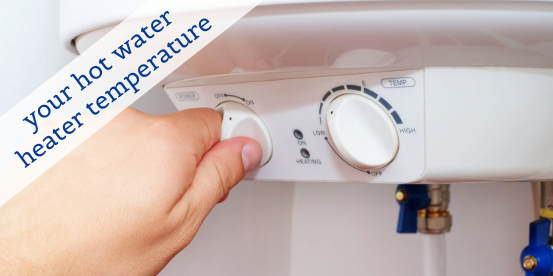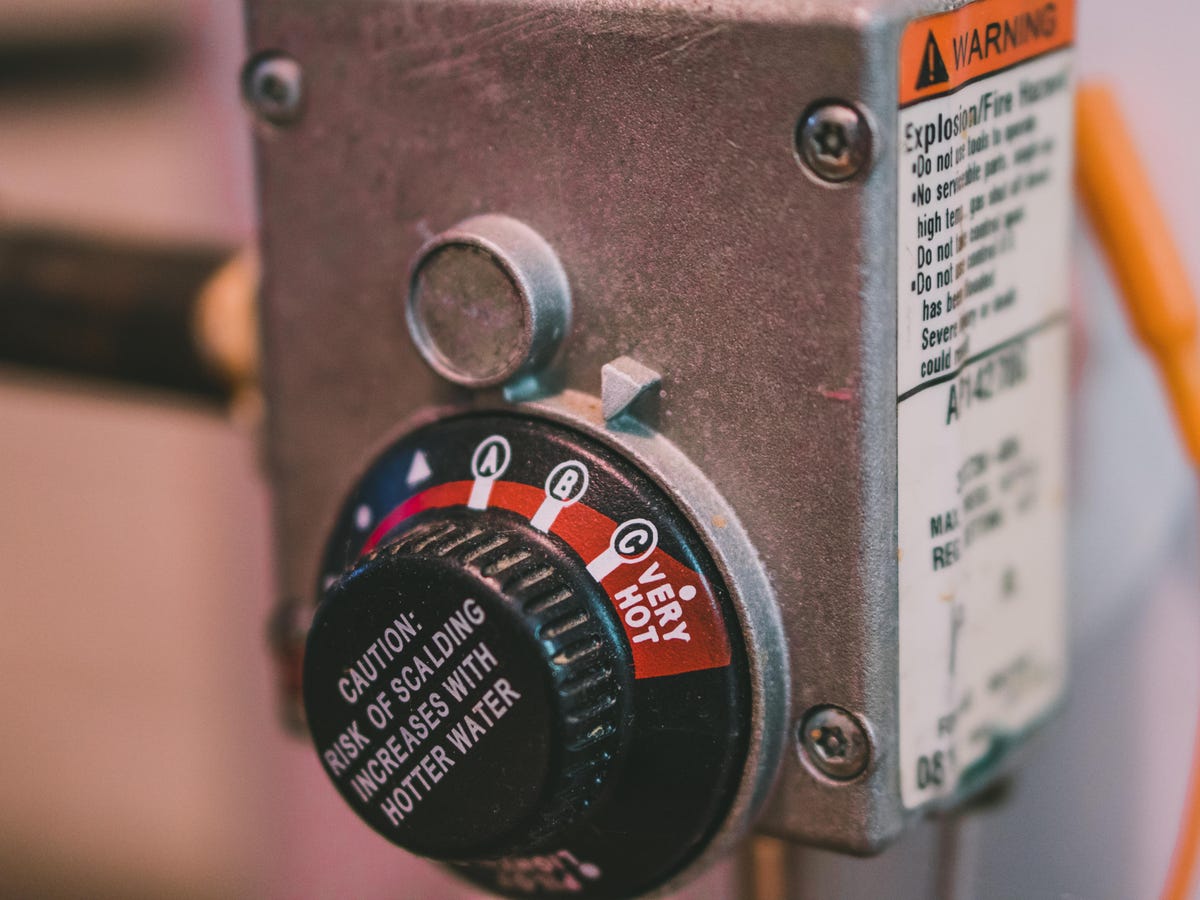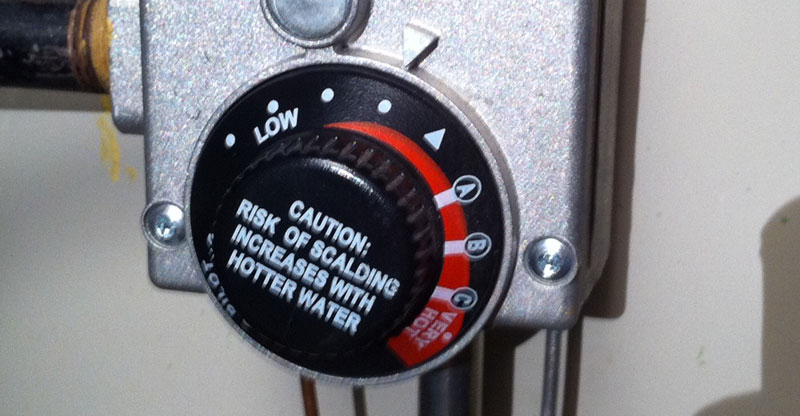Your hot water tank thermostat should be set at 120°F. This temperature balances energy efficiency and safety.
Setting your hot water tank thermostat to the right temperature is crucial for both safety and efficiency. A temperature of 120°F helps prevent scalding, especially for children and the elderly. It also reduces the risk of bacterial growth, such as Legionella, which can thrive in lower temperatures.
Additionally, maintaining this setting can help save on energy bills by reducing excessive heating. Regularly checking and adjusting your thermostat ensures your water heater operates optimally. Proper maintenance and the correct temperature setting can extend the lifespan of your water heater, providing reliable hot water for your household needs.
Page Contents
- 1 Introduction To Hot Water Tank Temperature
- 2 Recommended Temperature Settings
- 3 Effects Of Too High Temperatures
- 4 Risks Of Setting The Temperature Too Low
- 5 Special Considerations For Different Users
- 6 How To Adjust Your Hot Water Tank Thermostat
- 7 Smart Thermostats And Timers
- 8 Maintaining Your Hot Water Tank For Optimal Performance
- 9 Faqs On Hot Water Tank Thermostats
- 10 Conclusion: Finding Your Ideal Setting
- 11 Frequently Asked Questions
- 12 Conclusion
Introduction To Hot Water Tank Temperature
Setting the right temperature is crucial. It ensures safety and efficiency. The ideal temperature for most households is 120°F. This setting prevents scalding and saves energy. Children and elderly are especially vulnerable to hot water burns. A lower temperature can reduce this risk. It also helps in lowering energy bills.
Importance Of Correct Thermostat Settings
Correct settings prevent bacterial growth. Bacteria like Legionella can thrive in warm water. Keeping the thermostat at 120°F ensures safety. Higher settings can lead to energy wastage. It also increases the risk of burns. Consistent temperature settings can prolong the life of the tank. Regularly check and adjust the thermostat as needed. This ensures optimal performance and safety.
Safety And Energy Considerations
Balancing safety and energy use is important. A lower temperature saves energy. It also reduces the risk of burns. Regular maintenance is key. Check for any malfunctions in the thermostat. A well-maintained tank operates efficiently. This helps in saving money and ensuring safety. Always prioritize both safety and energy efficiency.
Recommended Temperature Settings
Set your hot water tank thermostat to 120°F (49°C) for optimal safety and energy efficiency. This temperature prevents scalding while reducing bacterial growth.
The Energy Department’s Advice
The Energy Department recommends setting your water heater to 120°F. This temperature saves energy and prevents scalding. It’s a balance between safety and comfort. At 120°F, bacteria growth is minimized. This setting also helps reduce your energy bills.
Balancing Safety And Comfort
Setting the thermostat to 120°F is safe for most households. It keeps the water hot enough for daily use. Scalding risks are lower at this temperature. Some homes may prefer a slightly higher setting. For example, elderly people might need warmer water. Adjust the temperature based on your needs. Always ensure it does not exceed 140°F to avoid burns.
Effects Of Too High Temperatures
Hot water can cause burns quickly. Scalding can happen in seconds. Children and elders are at higher risk. Setting the thermostat too high is dangerous. Use lower settings for safety. Keep the water temperature below 120°F.
High temperatures use more energy. Energy bills will increase. Lower settings save money. Set the thermostat to 120°F for savings. Lower energy use helps the environment. Smart settings benefit everyone.

Credit: www.gopreferred.com
Risks Of Setting The Temperature Too Low
Setting the temperature too low can cause bacteria to grow. One dangerous bacterium is Legionella. This can cause Legionnaires’ disease. This is a serious lung infection. Keeping the temperature higher helps kill these bacteria. This ensures your water is safe to use.
If the temperature is too low, you might not have enough hot water. Showers could turn cold quickly. Washing dishes might not clean them well. Higher temperatures ensure a steady supply of hot water. This makes daily chores easier and more comfortable.
Special Considerations For Different Users
Children and elderly people need extra care. Set the thermostat to a safe temperature. 120 degrees Fahrenheit is often recommended. This temperature prevents scalding and burns. It also helps save energy. Always check the water temperature before use.
People with weak immune systems are at risk from bacteria. Setting the thermostat to 140 degrees Fahrenheit can kill harmful bacteria. Legionella bacteria can grow in cooler water. Ensure the water heater is well-maintained. Regularly flush the tank to remove sediment.
How To Adjust Your Hot Water Tank Thermostat
First, turn off the power to the hot water tank. Find the thermostat access panel on the tank. Use a screwdriver to remove the panel. Inside, you will see a dial or digital display. Adjust the thermostat to the desired temperature. The recommended setting is usually around 120°F. Replace the panel and turn the power back on. Check the water temperature after a few hours.
- Screwdriver
- Thermometer
- Flashlight (if needed)
- Protective gloves
Smart Thermostats And Timers
Smart thermostats make controlling your hot water easy. These devices automate temperature settings to match your needs. This helps save energy and reduces your utility bills. You can set different temperatures for different times. For example, you can have hot water in the morning but save energy at night. You can also control these devices from your phone. This feature adds convenience and flexibility to your daily routine.
Smart technology offers many benefits. It makes managing your home’s temperature easier. Smart thermostats can help you save money. They are also easy to use and set up. But there are some drawbacks. These devices can be expensive. They also depend on a stable internet connection. If the internet is down, the smart features won’t work.

Credit: www.cnet.com
Maintaining Your Hot Water Tank For Optimal Performance
A regular maintenance schedule is important for your hot water tank. Check the thermostat settings every six months. This will ensure the water heats properly. Inspect the tank for any leaks or corrosion. Drain and clean the tank yearly to remove sediment. This will improve efficiency and extend its life. Replace the anode rod every few years. This prevents rust and keeps the water clean.
Notice any unusual noises from the tank. This might mean the thermostat is not working right. Water temperature should be consistent. Fluctuating temperatures indicate a problem. High energy bills can signal an inefficient thermostat. If the water is too hot or too cold, check the thermostat settings. Consistent issues may require a professional inspection.
Faqs On Hot Water Tank Thermostats
If the water is too hot or too cold, check the thermostat settings. Ensure it is set between 120-140°F for optimal temperature. Sometimes, sediment buildup can cause issues. Drain the tank to remove sediment. If there is a strange noise, inspect for leaks or worn-out parts.
Reset the thermostat if the problem persists. Locate the reset button and hold it for a few seconds. This can solve minor glitches. For inconsistent water temperature, check the heating element. It may need replacement.
Call a professional if you smell gas or suspect a gas leak. These are serious issues. If the water is rusty or discolored, a professional should inspect it. This could indicate a corroded tank or pipe.
Leaking water from the tank is another sign. It requires immediate professional attention. Electrical issues, such as a tripped breaker, may need an expert’s help. Ensure safety by getting a qualified technician.

Credit: augerpros.com
Conclusion: Finding Your Ideal Setting
Setting your hot water tank thermostat correctly ensures energy efficiency and safety. Aim for 120°F (49°C) to prevent scalding and reduce energy costs. Proper temperature settings contribute to both comfort and savings.
Summary Of Key Points
Your hot water tank thermostat should be set between 120°F and 140°F. This range helps save energy and prevents scalding. A lower setting can reduce energy bills. It also slows down mineral buildup and corrosion in your tank. Yet, water below 120°F may not kill harmful bacteria. Ensure to check your water heater manual for specific recommendations. Regularly inspect your thermostat to maintain efficiency. Adjust based on your household’s needs.
Personalizing Your Hot Water Experience
Consider your family’s hot water usage. Large families may need a higher setting. Small households can save energy with a lower setting. Safety is crucial, especially with children or elderly at home. Always balance comfort and safety. You can test water temperature using a thermometer. Place the thermometer under running water from the tap. Adjust settings gradually for the best results.
Frequently Asked Questions
Is 140 Degrees To Hot For A Water Heater?
Yes, 140 degrees is too hot for a water heater. The recommended setting is 120 degrees to prevent burns and save energy.
What Should My Water Heater Thermostat Be Set At?
Set your water heater thermostat to 120°F for safety and efficiency. This temperature prevents scalding and saves energy.
Is 135 Too Hot For A Water Heater?
Yes, 135°F is too hot for a water heater. The recommended setting is 120°F to prevent burns and save energy.
What Temperature Is The B Setting On A Water Heater?
The B setting on a water heater typically corresponds to a temperature of around 140°F (60°C). This setting helps balance safety and energy efficiency. Always check your water heater’s manual for precise details.
Conclusion
Setting your hot water tank thermostat to 120°F ensures safety and efficiency. This temperature prevents scalding and saves energy. Regularly check your thermostat to maintain optimal performance. Proper settings can extend the lifespan of your water heater. Follow these guidelines for a comfortable and cost-effective hot water supply.
